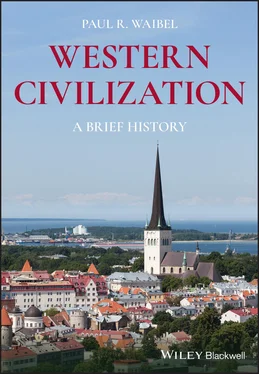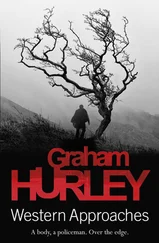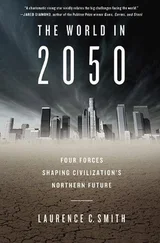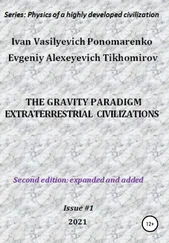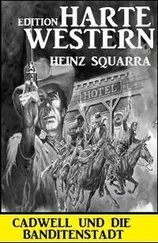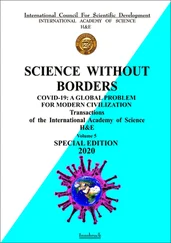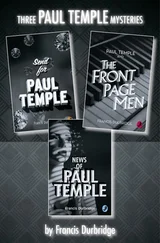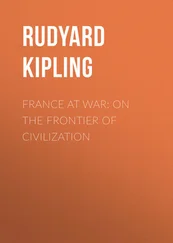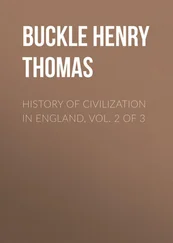1 Cover
2 Preface
3 Acknowledgments
4 Part I: Ancient and Classical Civilization: An Overview 1 The Cradle of Civilization Birth of Civilization Egypt Hebrews Hebrew Contribution to Western Civilization Later Empires References 2 The Ancient Greeks and Their World Minoan Civilization Mycenaean Civilization The Dark Ages (c. 1100–800 BC) The Archaic Age (c. 800–480 BC) Sparta and Athens Persian Wars (492–449 BC) The Classical Age (c. 480–338 BC) The Hellenistic Age (323–31 BC) Greek Society Women in Greek Society Slaves in Greek Society Sex in Greek Society Greek Philosophy The Greek Legacy References 3 The Roman World Early Republic Early Conquest Under the Republic Roman Expansion in the East Decline of the Republic Pax Romana Roman Cultural Life The Rise of Christianity Decline of the Empire References
5 Part II: Europe in the Middle Ages: An Overview 4 The Birth of Europe Early Germanic Kingdoms Disintegration of the Carolingian Empire New Invasions Feudalism Feudal System Manorial System Europe's Neighbors Rise of Islam References 5 Dawn of the Age of Faith Rise of the Papacy Rise of Monasticism Feudalism and the Church Church Renewal Crusades Feudal Monarchies England France Holy Roman Empire References 6 The High Middle Ages, 1000–1300 Faith and Reason Medieval Synthesis Medieval Model of the Universe Medieval Art and Literature Late Middle Ages, 1300–1500 Famine Plague Hundred Years' War, 1337–1453 References
6 Part III: Birth of Modern Europe: An Overview 7 The Renaissance and Reformation Renaissance Italy Renaissance Humanism Leading Italian Humanists Northern Renaissance Leading Christian Humanists Renaissance Art and Culture 1 Protestant Reformation Background Mainline and Radical Reformation Martin Luther Huldrich Zwingli John Calvin Reformation in England Catholic Reformation Conflicts among the Protestant Reformers Assessment References 8 New Horizons Rise of the Nation‐States Spain France England Holy Roman Empire Exploration and Discovery Scientific Revolution From Copernicus to Newton Bacon and Descartes Significance of the Scientific Revolution References 9 Age of Enlightenment and Revolution Enlightenment Enlightenment Political Theory Social Contract Theorists Thomas Hobbes John Locke Jean‐Jacques Rousseau Montesquieu Enlightened Despotism French Revolution and Napoleon Background Moderate Phase, 1789–1791 Radical Phase, 1792–1794 End of the Terror and Return of the Moderates, 1794–1799 Napoleonic Period, 1799–1815 Enlightened Despot Empire References
7 Part IV: Nineteenth Century: An Overview 10 Europe’s Great Powers in the Nineteenth Century Vienna Congress Concert System Latin America, Britain, and the United States Greek War for Independence Decembrist Revolt Revolutions of 1830–1832 Revolutions of 1848 France Germany Austria Rome Why the Revolutions Failed Unification of Italy and Germany Italy Germany Paris Commune References 11 Industrial Revolution Origins A Second Industrial Revolution Free Trade Impact of the Industrial Revolution on Society Child Labor Women Urbanization Responses to Industrialization Early Reform Efforts Marxism and the Working Class Marxism's Appeal Orthodoxy and Revision Socialism in Britain Anarchism References 12 Nineteenth‐Century Intellect and Culture Romanticism Romantic Revolt and Immanuel Kant's Idealism A Second Scientific Revolution Darwin and Evolution Reaction to Darwin's Theory of Evolution Christian Response to Darwin Social Darwinism Positivism Realism and Naturalism Revolt Against Reason Friedrich Nietzsche Bergson, Sorel, Freud, and Einstein References 13 Nineteenth‐Century Imperialism New Imperialism Motives Colonial Empires Scramble for Africa India China Japan Southeast Asia American Empire References
8 Part V: The Crisis of Western Civilization: An Overview 14 The Great War: 1914–1918 Prelude to the Great War Explosion in the Balkans 1914 War in the Trenches Modern Weapons of War 1915 Sausage Machine: 1916 Home Front War around the World Year of Decision: 1917 End of the War: 1918 References 15 Peace and Disillusionment Paris Peace Conference: 1919 League of Nations Disillusionment Culture Art Literature Popular Culture Social Impact References 16 A Failed Peace: 1919–1939 Recovery and Prosperity Great Britain France Weimar Germany United States Soviet Russia Italy The Great Depression American Connection Hitler’s Rise to Power References 17 A Second Great War Road to War in Europe Totalitarianism Hitler and the Appeasers: 1933–1939 Blitzkrieg Road to War in the Pacific Turning of the Tide Banality of Evil Holocaust No Room References
9 Part VI: The End of Europe: An Overview 18 Cold War and Recovery: 1945–1962 Origins of the Cold War 1946 Containment Cold War in Asia China Vietnam Europe To the Brink of Nuclear War Postwar Recovery Rise of Christian Democracy Building the Welfare State Postwar America References 19 Cold War: 1962–1991 The Space Race Globalizing the Cold War Vietnam War Turbulent 1960s Paris: 1968 The Prague Spring: 1968 Economic Slump Recovery Revolution of 1989 and End of the Russian Revolution of 1917 References 20 A New World Order Visions of a New World Order War in the Balkans Terrorism and War Afghanistan Iraq Arab Spring World Migration The Search for Meaning in a Multicultural World Culture Popular Culture 2000–2019 Worldwide Internet Probing the Limits of Space Human Genome Project Western Civilization and the World References
10 Index
11 End User License Agreement
1 Chapter 1 Figure 1.1 Map of the ancient Near East: The Birth of Civilization. Figure 1.2 The Ishtar Gate, entrance to the inner city of ancient Babylon, w... Figure 1.3 Chronology of ancient Egypt. Figure 1.4 The Great Pyramid of Khufu, or Cheops, completed c. 2560 BC.
2 Chapter 2 Figure 2.1 Map of ancient Greece. Figure 2.2 The Pnyx was a hill in Athens where the citizens of Athens gather... Figure 2.3 The Erchtheion was a temple dedicated to the goddess Athena on th...
3 Chapter 3 Figure 3.1 Map of the Roman Empire, AD 117. Figure 3.2 The Pantheon in Rome was completed c. 125 during the reign of Had... Figure 3.3 The Arch of Constantine in Rome commemorates Constantine's victor...
4 Chapter 4 Figure 4.1 Duke William of Normandy's victory over King Harold of England at... Figure 4.2 A Medieval Manor was an economically self‐sufficient world of its...
5 Chapter 5 Figure 5.1 “St. Jerome's Latin translation of the Bible (390–405), known as ... Figure 5.2 Woodcut from c. 1486 depicting Pope Urban II at the Council of Cl...
6 Chapter 6Figure 6.1 Map of Europe during the Middle Ages.Figure 6.2 Dante Alighieri, author of the Divine Comedy, perhaps the greates...Figure 6.3 Statue of Joan of Arc by Emmanual Fremiet in Paris.
7 Chapter 7Figure 7.1 The Doge's Palace, established in 1340, was the residence of the ...Figure 7.2 Map of Renaissance Italy.Figure 7.3 The “Hospital of the Innocents” in Florence, Italy was designed b...
8 Chapter 8Figure 8.1 The geocentric model of the universe, also known as the pre‐scien...Figure 8.2 The heliocentric model of the universe, also known as the Coperni...Figure 8.3 Aristotle, Ptolemy, and Copernicus are pictured discussing astron...
9 Chapter 9Figure 9.1 The title page from Locke's Two Treatises of Government (1690).Figure 9.2 Portrait of Napoleon I by Nicolas‐Toussaint Charlet (c. 1821).
10 Chapter 10Figure 10.1 Map of Europe at Mid‐1800’s.Figure 10.2 Barricade Scene from the June Days in Paris during the Revolutio...Figure 10.3 Napoleon III surrendering to Wilhelm I following the Battle of S...
11 Chapter 11Figure 11.1 Steam powered agricultural equipment on display at the Great Exh...Figure 11.2 Karl Marx, author of The Communist Manifesto (1848), one of the ...
Читать дальше
